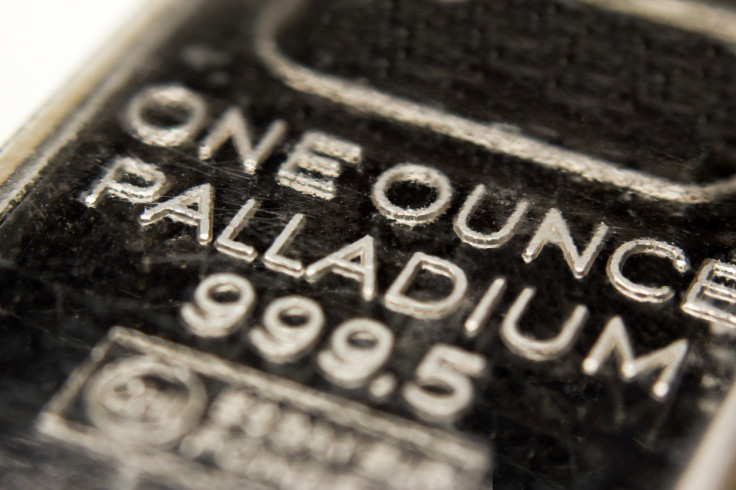Palladium: facts and investing tips on the surging precious metal in 2017
Palladium prices have surged of late – here's what you need to know and watch out for if you wish to trade the metal.
Much of the precious metal market obsesses about gold and silver in the main, largely down to their status as safe-haven metals. Their market volatility and price direction is often accounted for by monetary policy overtures and investors' risk appetite. Of late, such sentiment has also dominated market discourse for platinum, but not quite so for its sister precious-metal palladium, which outperformed the lot of them in 2016, and continues to do so (this far) into 2017.
Away from prying market headline seekers, palladium, as IBTimes UK reported, has notched gains of over 10% to 13 January, barely weeks into the new trading year. Such gains follow a climb of over 20% on an annualised basis last year. Therefore, investing in palladium might sound like a great idea at the moment. Given it's a speciality metal, taking a bet on it is a bit more complicated than your average flutter on gold.
However, should you choose to go down this path and partake in the new palladium rush, it is worth understanding the metal and its uses, alongside investment pathways that are available complete with caveats and pitfalls, as outlined:
How rare a precious metal is palladium?
Palladium is without doubt one of the rarest precious metals on earth, roughly about 15 times more rare than its sister metal platinum, and around 30 times rarer than gold, the world's preferred safe-haven asset.
Where is it mined?
Bulk of the world's palladium is mined in Russia (41%) and South Africa (38%). Canada, US and Zimbabwe are other major producers. Decrease in production from the aforementioned can contribute to price spikes, and over the last decade there has almost always been a persistent supply deficit.

What is it used for?
Palladium is used in automobile manufacturing, electronics, dentistry and fuel-cell production. Of these, automobile manufacturing, where palladium is utilised in catalytic convertors for petrol powered vehicles, accounts for over 55% of the precious metal's demand.
How to invest in palladium?
Like all precious metals, there are a number of methods available for investing in palladium, as outlined below:
1. Buying physical palladium bars and coins
For small levels of investment, like silver and gold, the option of buying palladium bars and coins exists, if not with the same levels of divestment avenues, should you wish to sell at a later stage.
Palladium coins can be purchased for as little as $50, while bars and wafers are sold as per their weight in line with the spot price. Should you opt for coins, seek palladium bullion coins instead of collective palladium coins which carry a numismatic premium, in addition to weight quantity.
2. Futures
Palladium trades on the New York Mercantile Exchange (NYMEX) and the Tokyo Commodities Exchange (TOCOM). Each exchange has its own contract size and minimum price fluctuation. For the New York contract, trading is conducted over 15 months beginning with the current month and the next two consecutive months before moving into the quarterly cycle of March, June, September, and December.
Price is quoted in dollars and cents per troy ounce, with changes reflected in multiples of $0.05 per troy ounce ($5 per contract). Futures trading typically provides significant leverage, so you'll have to fork up 25% of the cover price to commence trading.
3. Exchange traded funds (ETFs)
Quite like gold and silver ETFs, palladium ETFs are open-ended mutual funds backed by insured physical palladium bars stored in secure storage vaults that track the price of the precious metal. One UK market example is ETF Source Physical Palladium. Other ETF avenues are available, wherein the fund offers palladium along with other precious metals.
Such ETFs allow investors to own palladium and get exposure to its price, but save them the inconvenience of owning it physically. Each holding entitles the holder an ownership to a specific amount of palladium. There is a commission of around 0.4% to 0.6% for buying or selling palladium ETFs.
4. Stocks in palladium miners
Owning shares in palladium miners is another avenue, but hardly straightforward. Many mining companies do not make it obvious but have palladium extraction operations, including some of the sectors biggest names in the business such as Anglo American and Glencore.
London-listed midcap Lonmin, which touts itself a platinum miner, also has exposure to palladium. Toronto-listed North American Palladium is among the few pure-plays on palladium reliant stocks around, but other stock options are few and far between.
Final word of caution
As with all precious metals, palladium faces its own round of volatility and is not quite trailing its sister metal platinum. Charles Gibson, director of mining at Edison Investment Research, says historically, platinum and palladium prices have been closely aligned. "However, of late, platinum is behaving more and more like a precious metal, while palladium is behaving more like an industrial metal of a high price."
In theory, given its direct connection with industrial demand, predicting palladium's decline should be easier than gold and silver, says Charles Long, mining analyst at Beaufort Securities.
"However, potential buyers must note that palladium remains a specialist metal. It correlates strongly to industrial demand, but those familiar with the highs and lows of gold as an insurance hedge, would need a different mindset when it comes to trading palladium, a precious metal that's not in public eye as much as the yellow metal."
© Copyright IBTimes 2025. All rights reserved.






















